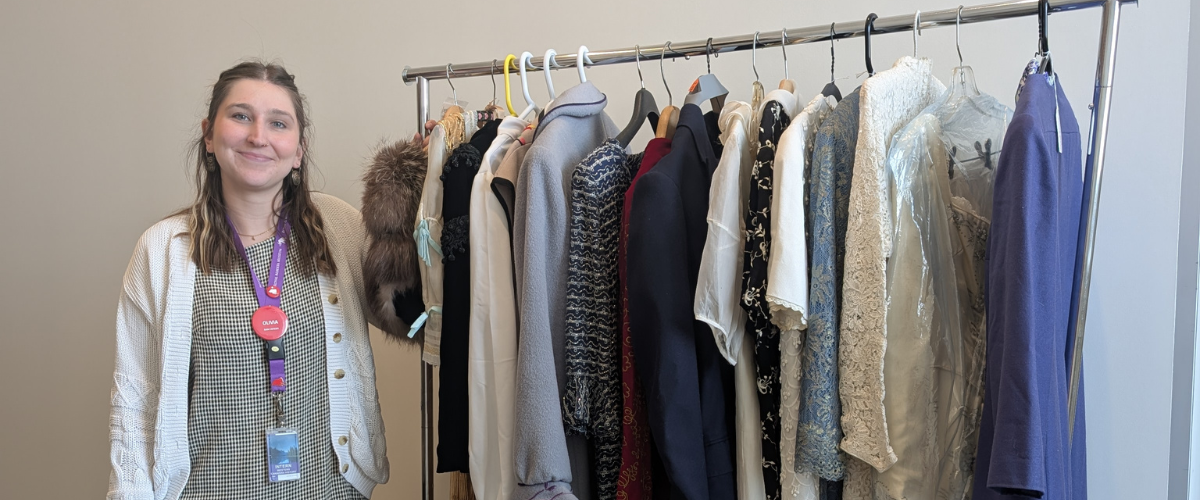Learning Through Legacy: My Practicum at the Royal Alberta Museum
Olivia Nash, Daily Life and Leisure Student Intern
My name is Olivia and I am currently a practicum student at the Royal Alberta Museum, completing a cataloguing project as part of the credits needed for my Bachelor of Science in Human Ecology, majoring in Clothing, Textiles, and Material Culture through the University of Alberta.
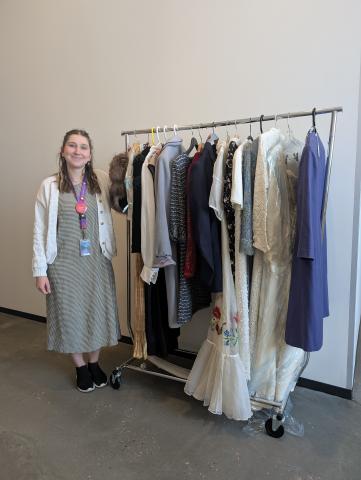
For the duration of my practicum, I have been working with a remarkable collection of dressmaking tools, clothing, and other artefacts from an Edmonton family of Hungarian heritage. The collection includes 129 unique items that tell the story of women's work and cultural tradition in 20th century Edmonton. Through the items the women of one family saved, their story can be told, and I am honoured to be able to share some of it. While this donation was assigned to me as my independent project for the duration of my internship, I am so grateful to get the chance to work on such a multifaceted project with a compelling history.
In 1920, a young woman named Rosalie left her home in Hungary to come to Canada and find a better life for herself. She had to leave her three-year-old daughter, Margaret, behind in the care of her parents and Margaret's aunt. Rosalie ended up just outside of Edmonton on a homestead, where she met and married Mr. Mike Halasy. 10 years after her mother left, little Margaret made the journey across the ocean with two women charged with her care. At the age of 13, Margaret had to leave behind the life and people she knew to join her mother in a country where she did not even speak the language. Margaret arrived safely and joined her mother, new stepfather, and baby sister Clare (Clara) in Edmonton. Mike, who worked as a shoemaker, died suddenly of a stroke in March of 1938, leaving Rosalie to look after her two young daughters in a time when she could not even open her own bank account. Rosalie, who was described as being quite industrious, put her dressmaking skills from Hungary to work and opened Halasy’s Dressmakers in downtown Edmonton in a building near the Legislature, which she owned until it was torn down in the late 60’s or early 70s. Mrs Halasy, as she was always known, also rented out rooms in the house to tenants, and kept her sewing studio in the glassed-in porch.
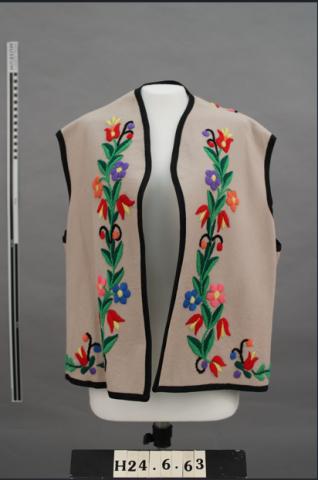
Margaret followed in her mother’s footsteps and also learned how to sew. She worked for Halasy’s while it was open and then began her own business from her home where she sewed under her nickname, Manci. Around this time, Margaret and Rosalie became increasingly involved in the Hungarian Cultural Society of Edmonton, sewing for and organizing Hungarian fashion shows to illustrate Margaret’s belief that their design traditions could be applied to contemporary styles. The whole family came to be involved with these fashion shows, and all three of Margaret’s daughters embroidered garments and accessories from a very young age. These were Margaret’s passion projects, and a few of the garments from these shows were preserved by the family and were donated as part of this collection.
In addition to her work for the Hungarian Cultural Society, Margaret sewed for private clients across the Edmonton area, such as local philanthropists Mrs. Cecile MacTaggart and Mrs. Olga Rollingher. She also made up garments designed by an aspiring local designer, Calvin French, who would also loan his models for the Hungarian fashion shows.
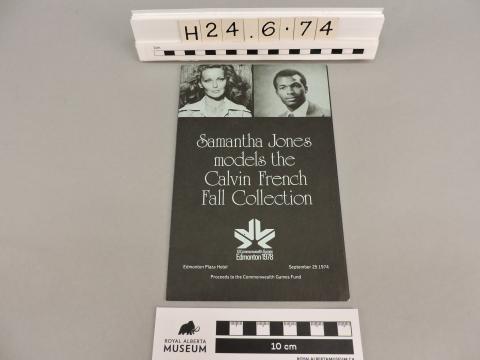
Margaret married Mr. Karoly Szel in 1950. For this occasion, her mother Rosalie sewed her wedding dress–another piece that was gifted to the RAM as part of this collection. Margaret and Karoly went on to have four children: Agnes (Agi), Marcella, Ilona, and Kalman. While all four of the children were involved at one time or another in the Hungarian Cultural Society Ladies Group through modeling and dancing in fashion shows, it was Agnes who carried on her mother’s and grandmother’s legacies as a seamstress. Agnes also put her skills to use for the Hungarian Cultural Society Ladies Group, and she was the family member who contacted us at the Royal Alberta Museum to share this collection and her family’s history.
Some of the most interesting items included in the collection are the programs, invitations, and posters from the events put on by the Hungarian Cultural Society. My interest in these items surprised me because my background is in clothing and textiles, and I worried the papers would not hold my interest in the same way. However, through these artefacts, I could track marriages, children, and other family connections, and see the larger picture of how rooted this family was in Hungarian culture in Edmonton. Of course, still notable are the dresses! Both Margaret and Agnes’ wedding dresses were a part of this donation and they are among my favourite pieces we took in with this collection. Margaret, Agnes, Marcella, and Ilona all contributed to the making of Agnes’s intricate wedding dress that alludes to Hungarian traditional styles.
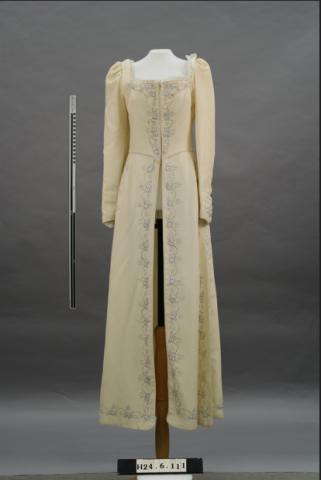
Many of the clothes that were saved and donated are beautiful examples of Hungarian culture living on in Edmonton. Some of the garments feature incredible embroidery and beadwork, done by three generations of women and inspired by traditional Hungarian motifs. One of the objects donated was a traditional Hungarian costume, worn by Margaret and made by her and her mother, Rosalie. Other pieces in the collection are examples of silhouettes popular throughout the years; two notable examples of distinct silhouettes are the black and white dress made and worn by Rosalie in the 1920s and the blue striped dress which was the last piece Margaret sewed, at the age of 90, for her birthday celebrations.
This collection gave me a look into what life was like for the women of this family while allowing me to gain experience working in a museum. The collection is unusual in its large size, and as such it gave me the opportunity to learn about many different areas of work done in museums to record and preserve the donations they receive. The process is not as straightforward as I would have thought prior to this experience. I was very lucky that much of the work gathering information, numbering the artefacts, and creating skeletal records (records in our database that have names and numbers, but no other information) was done in advance before I arrived. However, even with all of that completed, the process is very time consuming. Despite the time-consuming nature of the project, I would not trade it for a different one. The depth and breadth of knowledge I have gained will be pertinent for me when I start my graduate degree in the fall. I will also be continuing on as a volunteer here at the Royal Alberta Museum, where I will not only gain more new experiences, but will also get to follow the story of this collection–wherever it may go.
